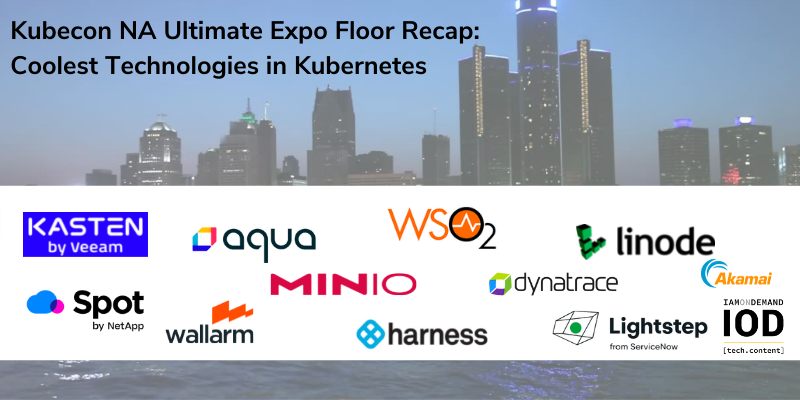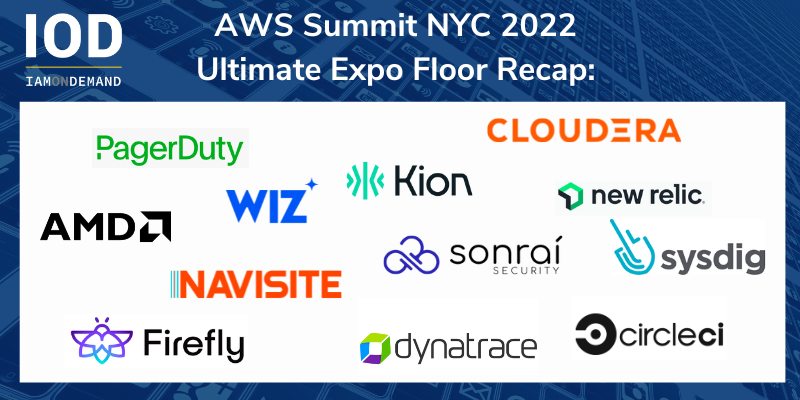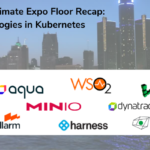At IOD, we love bringing you highlights of today’s leading-edge cloud technologies—and the best place to find those leaders is at blockbuster events like AWS re:Invent and KubeCon EU2022, which took place in May in Valencia.
You really can’t envision which way the cloud is heading without putting Kubernetes in the center of that picture. That’s why Valencia was so exciting. So naturally, we jumped at the chance to attend KubeConNA in Detroit last month. I made the trip with Alina, making this her first KubeCon. But I have to tell it like it is—I came home with mixed feelings.
It was definitely a high point for me to see (once again!) how this ecosystem is growing and how much potential IOD has to serve this market with its ever-expanding need for content and digital marketing services.
Highlights & 11 Coolest Technologies We Wouldn’t Want You to Miss
The keynotes were great, including a fabulously well-received talk by Frederick Kautz, who spoke about the long-term future in store for cloud-native applications, the infrastructure repercussions, and helping the industry rise to meet the coming demand. It definitely helped that Kautz gave his presentation dressed up as a real, live unicorn!
I was particularly impressed with the tremendous show of support for Ukraine—including passionate applause for Ihor Dvoretskyi, a senior developer advocate at the Cloud Native Computing Foundation who volunteered for his country’s armed forces when the war with Russia began. And I enjoyed seeing so many powerful and articulate female tech leaders in the spotlight at the conference as well.
The expo floor was huge and included hundreds of vendors, but I have to say—regrettably—that from a tech and innovation standpoint, KubeConNA 2022 didn’t meet my own high expectations as an analyst with more than a decade’s experience in the cloud field.
Running the expo floor, it suddenly hit me that this ecosystem seems to have been divided into two main categories: deployment and observability. I saw so many vendors offering monitoring solutions (maybe too many?), each with its “unique differentiation,” and at some point I felt I’d had enough of seeing maps of dependencies between servers and services. Heading to AWS re:Invent later on this month, I hope to be more excited by the ecosystem there.
As we always do, Alina and I spent a lot of our time on the show floor shaking hands, picking up swag, but mostly looking around to discover exciting new technologies and business opportunities. Here are 11 of the highlights we’re thrilled to have experienced.
Ready?
Let’s dive in…


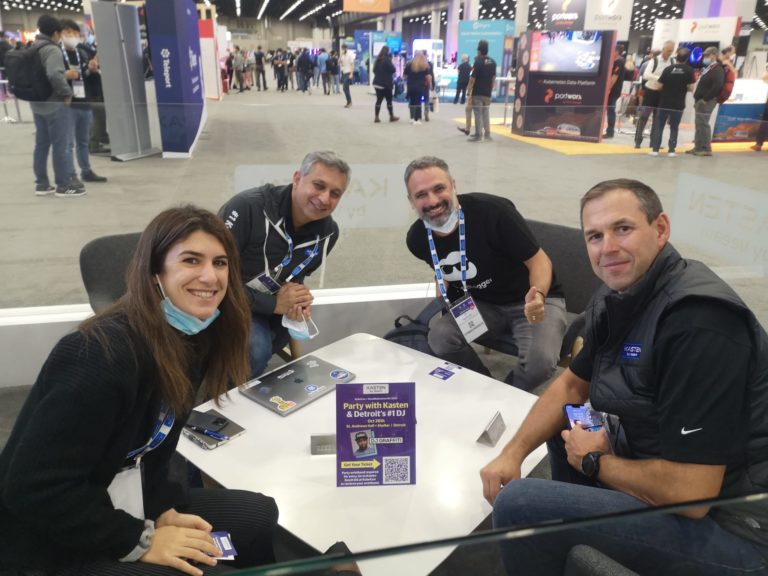
Veeam acquired Kasten back in 2020 to add a Kubernetes-native comprehensive backup and disaster recovery solution to its protection suite. Today, Kasten runs as an independent business unit within Veeam, giving this legacy company a strong footing in the cloud-native world in general and the world of Kubernetes in specific.
Kasten K10, the company’s dedicated Kubernetes data management platform, gives operations teams a simple and secure system backup and disaster recovery that reliably scales to enterprise capabilities. It also enables enterprises to move applications across namespaces, clusters, accounts, regions, and clouds in addition to backup and DR.
One of the main questions in my mind with a suite like this is about lock-in and interoperability of the backup environment, given that most of us are using multi-cloud environments. In a long discussion at the Kasten booth with Tom Leyden, VP of marketing, and Gaurav Rishi, VP of product, they explained that Kasten is not only agnostic to the cloud it runs on but also to the Kubernetes “flavor” the customer is using, giving their customers maximum freedom of choice.
Plus, because Kasten uses Kyverno as its policy engine, it is very simple to use it to author policies, requiring only a basic understanding of Kubernetes APIs—using declarative YAMLs—to generate policies that enforce automated data protection.


What does it mean to make Kubernetes hands-free? That’s the claim made by Spot by NetApp, and we were very eager to check out exactly what their solution has to offer.
Having come to IOD from the field of cloud footprint and cost optimization, I’m always excited to see new developments in this area. This continues to be one of the biggest challenges of our industry, considering that the architectures we’re deploying on public clouds today are large and complicated—leading to costs easily getting out of hand and staggering cloud bills.
Over the years, I’ve had my eyes on Spotinst, later renamed Spot, which originally focused exclusively on helping companies realize infrastructure savings through spot instances (which is where the original name comes from). NetApp acquired the company in 2020 in a move that surprised some within the industry.
Cloud solutions architect Jason McIntire explained that by “hands-free,” the company means that Spot uses ML and analytics to give organizations greater insight into and control over their cloud costs. It also introduces automation and actionable recommendations to ensure that workloads and applications are always running on the best possible infrastructure at the lowest cost available.
NetApp was a leader in recognizing the shift to public cloud and specifically to AWS. To a leading storage vendor like NetApp, this could potentially have posed a great threat. For NetApp, it just meant it was time to branch out, moving strategically into other IT areas like cloud cost management, including by acquiring startups like Spot that fill in the gaps in NetApp’s areas of expertise, including costs and security.
With NetApp’s present hold on the enterprise market, I believe all of this means that we’ll see NetApp leading in a diverse range of IT fields that extend far beyond storage.
P.S. They also had a neat Atari board at their booth!
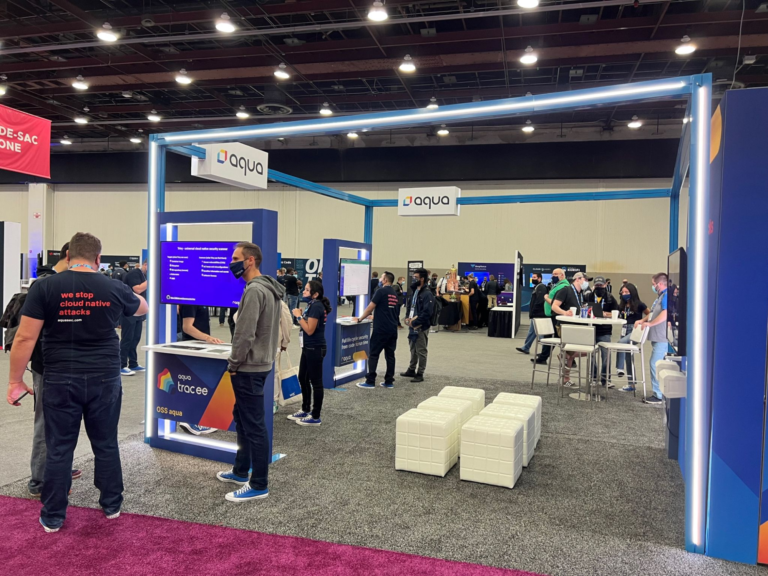
One of the most amazing contests of KubeCon NA22 Detroit was at the Aqua Security booth, where they were giving away an amazing Segway Ninebot Gokart Pro. Once at the booth, we were intrigued by the friendly reps’ t-shirts, which bore the simple message, “We stop cloud native attacks.”
To find out more, we chatted with Brian Glyer, head of global field marketing, about how Aqua helps companies in a low-friction way to innovate while meeting software supply chain security requirements. Their platform offers comprehensive prevention, detection, and response automation across the entire application lifecycle for both cloud infrastructure and workloads, no matter where they’re deployed.
Whatever Aqua Security is doing, it definitely seems to be working. GigaOm analysts recently named the platform an “outperformer” when stacked up against some of the biggest names in vulnerability management. Their report touts Aqua Security as the most “comprehensive cloud infrastructure and application vulnerability management solution,” making this an exciting company to watch.


If you haven’t heard of Harness yet, you should have. They’re a rapidly growing startup disrupting the software delivery market with an AI-based DevOps platform to accelerate cloud initiatives and cloud-native architectures built around containers and orchestration tools like Kubernetes and Amazon ECS.
Harness was started by Jyoti Bansal, better known as the founder of AppDynamics, which was sold in 2017 to Cisco for $3.7B the week before it was supposed to go public. Now, Bansal is taking Harness public, with a valuation of exactly the same amount: $3.7B.
I really enjoyed exploring their system. It was great seeing such a well-designed system that provides a broad range of management functionality for the SDLC. Harness brings together every stage in the SDLC: continuous integration, continuous delivery, feature flags, and—nice to see companies building this right into their solutions—cloud cost management.
I did feel that the platform would be far stronger with an option to “close the loop” with more possibilities for immediate remediation. While it’s far from simple to build this option in, given the complexity of cloud-native development, it was a small disappointment considering the buzz around this company, its amazing funding and steep valuation.

As a marketing and communications person in the cloud realm, I really admire clear language and a straightforward value proposition. And it’s hard to imagine anything more straightforward than the message greeting visitors to Linode’s booth: “Simple, Affordable, Accessible Managed Kubernetes.” Plus, Linode won our hearts and our KubeCon swag award with a giveaway of their adorable plush mascot Linny!
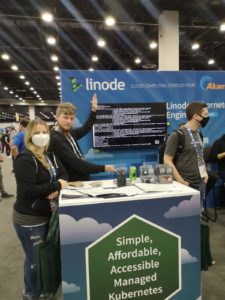

(Source: Linode)
Linode had already made somewhat of a name for itself with its long-lived Linux cloud-hosting service, which competed slightly under the radar with industry giants for nearly two decades before Linode was acquired earlier this year by veteran content delivery network (CDN) Akamai for about $900M.
The company has been on my radar for years, but always as somewhat of a second-tier vendor for public cloud services, lurking in the shadows of the giants. Following the acquisition by Akamai, it seems likely Linode is poised to become more of a formidable presence.
As with NetApp, it’s always interesting to see traditional IT vendors making waves in the cloud waters even without “cloud-native” credentials. We enjoyed stopping by their booth to chat with event manager Jamie Sherkness about the company’s plans to leverage its over 800,000 developers and 11 data centers around the world to add “at the edge” computing to Akamai’s impressive global CDN portfolio.

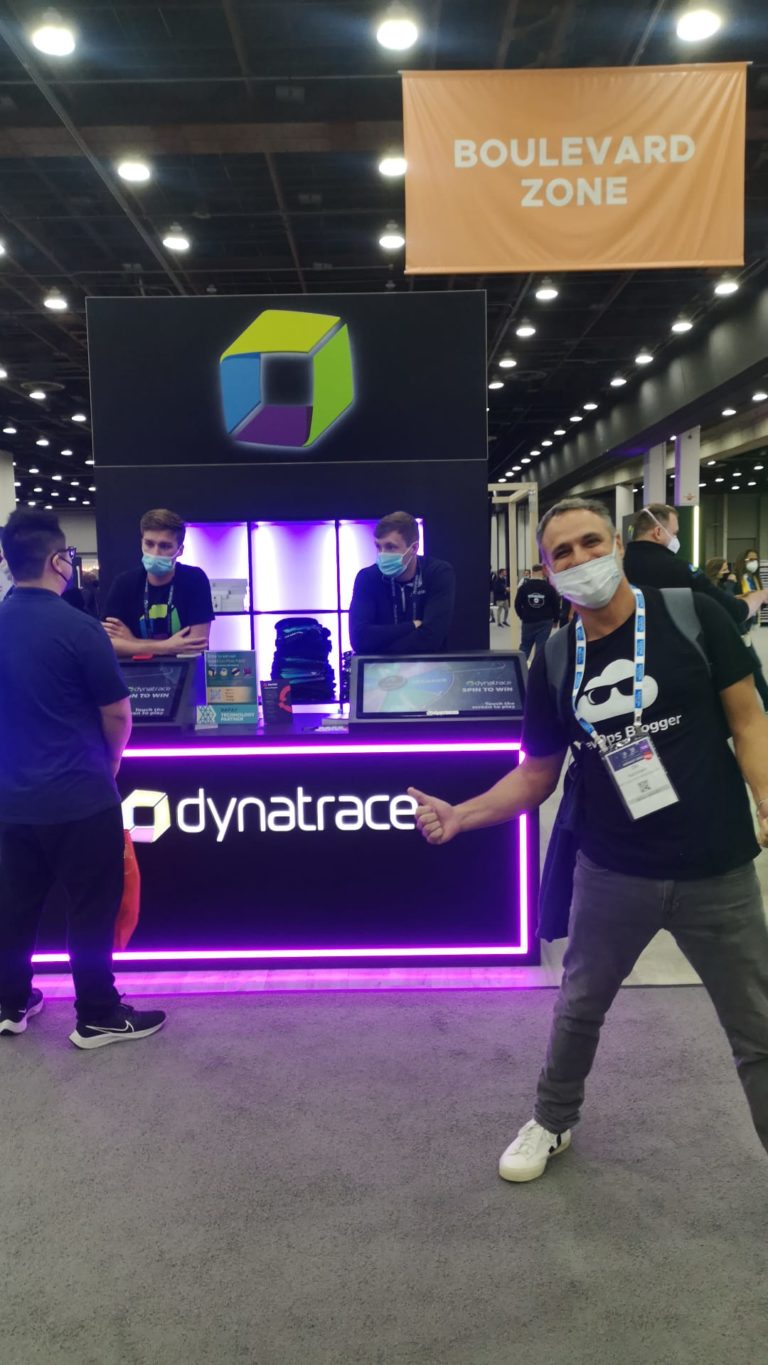
Here’s a booth we couldn’t ignore—glowing in neon-bright purple and green with the distinctive, colorful cube logo hovering just above a smiling, masked team of reps. So naturally we went over to take a look and learn more about what Dynatrace has to offer.
The product demo we viewed showed off the extensive observability capabilities of the platform, bringing together logs, metrics, traces, topology, user behavior, and more. The platform handles all data layers from the ground up (network to code level), adapted for large-scale distributed environments.
As the industry matures, monitoring services have become a major recurring theme of the KubeCon expo floor, a sign that the industry is maturing. They come in all shapes and sizes, but checking out Dynatrace and chatting with Meghan Summers, manager of global strategic events, it seems clear that this is perhaps the most mature product in this category.
The goal is not simply to provide more data—since the quantities of data available from most observability tools these days can be overwhelming—but to give users a way to manage the data. Days after KubeCon Detroit, Dynatrace launched Grail, its new data lakehouse analytics platform that promises to make not only observability but also security and business analytics more manageable.
The AWS re:Invent 2021 Expo Floor – Ultimate Recap

The AWS re:Invent 2021 Expo Floor: Coolest Technologies in Cloud Services & Automation
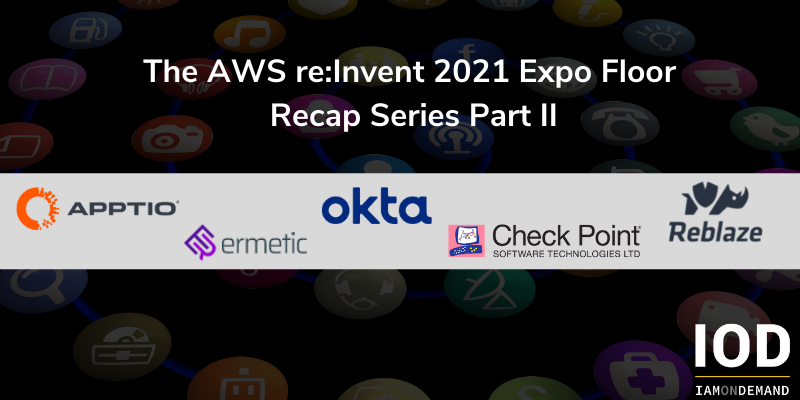
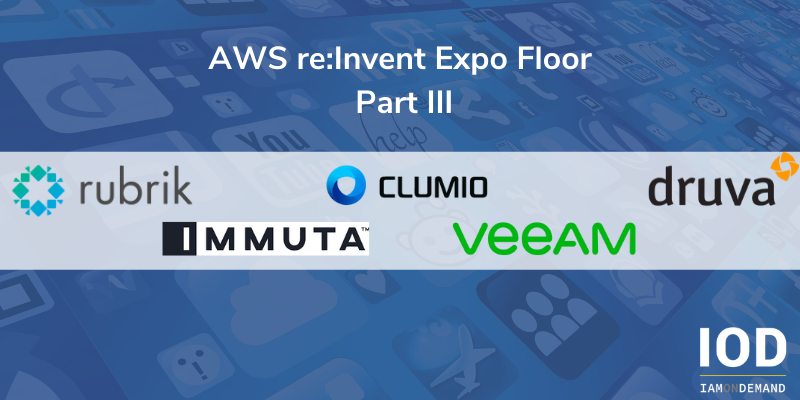
The AWS re:Invent 2021 Expo Floor: Coolest Technologies in Data Security


Who can resist a giant Jenga tower? Nobody, that’s who!
The clatter of falling wooden blocks pulled us in to check out another contender in the observability space: Lightstep, which bills itself as a “reliability platform” aiming to help cloud-native developers and SREs track system health, respond rapidly to changes and incidents, and accelerate release velocity, all fully supportive of the increasingly popular Open Telemetry standard.
Lightstep was acquired in 2021 by service workflow management specialist ServiceNow, creating a synergy that promised to make it simpler to convert insights into action. And last month, Lightstep grew a little more when it acquired Era Software to simplify log management.
We spoke with product manager Clay Smith and senior product marketing manager Andrew Gardner who demonstrated the platform. This definitely looks like a mature product capable of analyzing and identifying issues with specific deployments, changes, and dependencies—rarely simple in a multi-microservices environment.
I came away impressed with their platform’s deep monitoring capabilities, but it’s worth noting that the UX doesn’t seem particularly well designed. Still, if you’re looking for a powerful product that’s certain to grow and develop over the next few years, I say, why not give it a try? 🙂

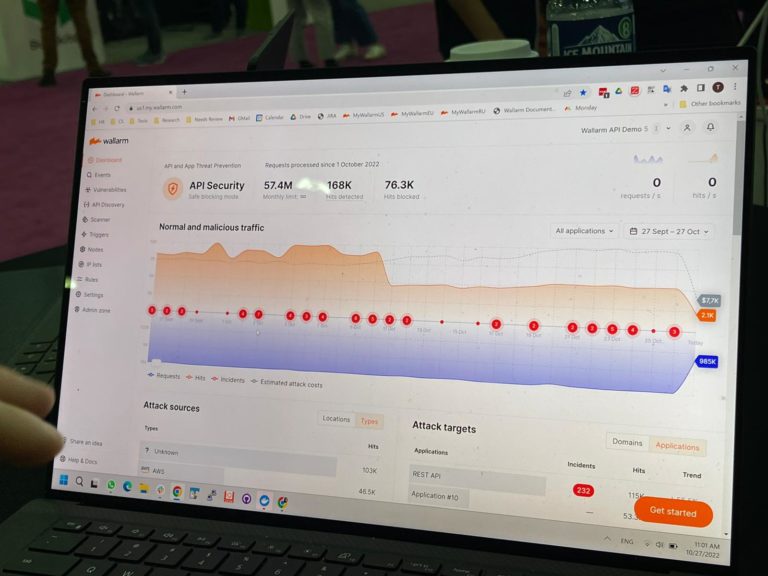

As application environments have become more complicated, embracing API gateways that connect services and transfer data between systems, API discovery and protection platforms have emerged as an important component of application security. Wallarm bills itself as “API security that cloud native companies love,” and certainly that love has been reflected in G2 ratings, where Wallarm has earned the #1 spot in the API security category.
Warm smiles (behind masks, but you can tell from the eyes!) welcomed us at the Wallarm booth, where we spoke with Rick Graham, VP of demand generation and marketing operations, all about how Wallarm helps security and DevOps teams protect Kubernetes-powered websites, microservices, serverless workloads, and APIs against a range of vulnerabilities, including the OWASP Top 10.
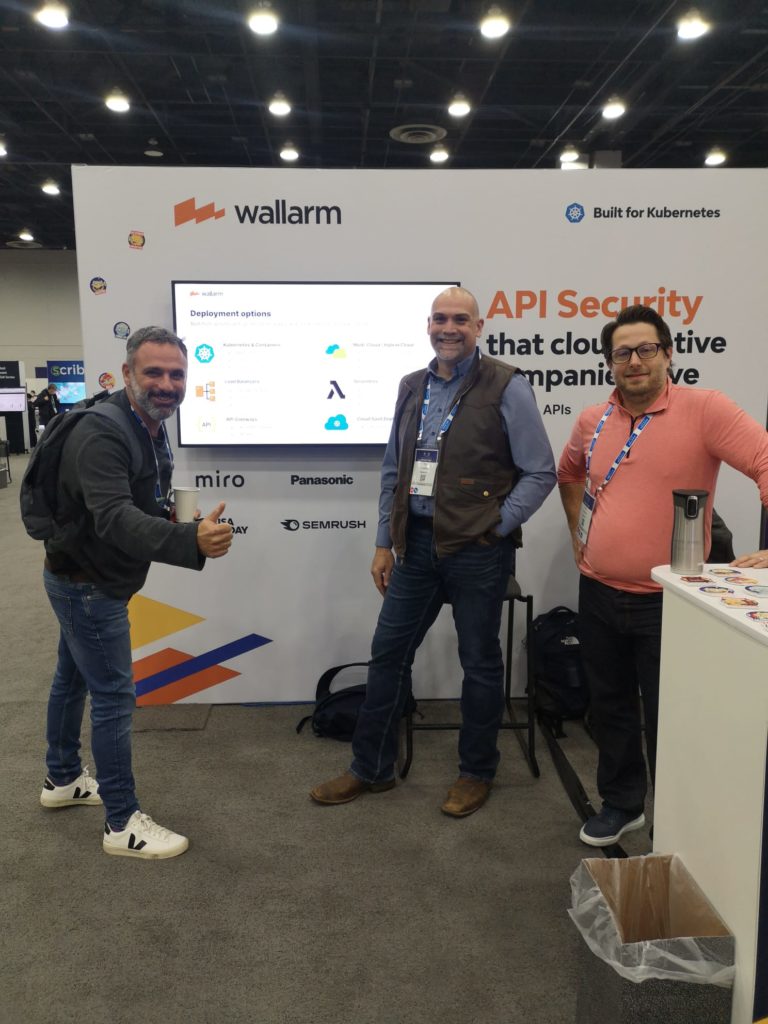
The Wallarm platform works across cloud-native and multi-cloud environments with a range of deployment options including Ingress Controllers, side-car proxy, and out-of-band deployment.
And unlike traditional API detection systems like WAFs, which are not enough in today’s threat environment, Wallarm assists with remediation through automated incident response to keep all security gaps tightly closed.

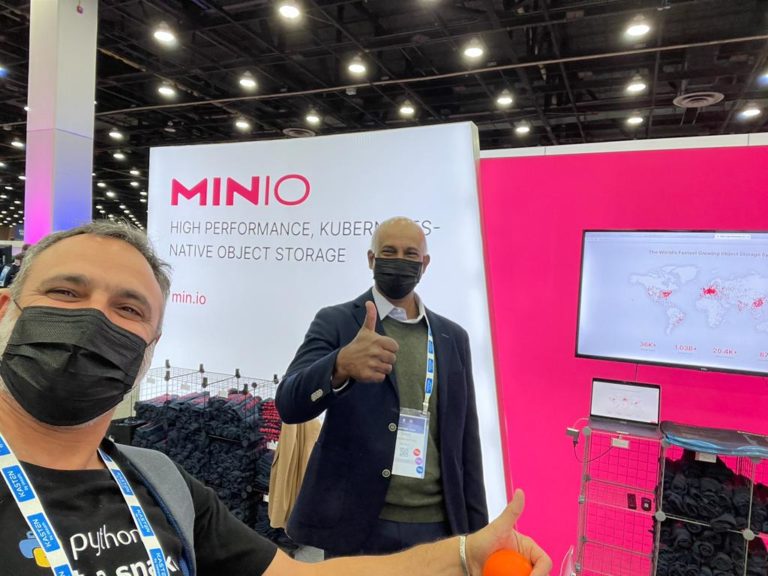
This next booth took me by surprise. I’d heard about Min.io long ago as an object storage vendor—like S3 but not S3. My question about that was always “Why?”, and I’ll be honest: the answers I got weren’t always 100% satisfying. I haven’t seen very many use cases for high-performance object storage and private cloud.
We spoke directly with Min.io CMO Jonathan Symonds at the booth, and I was surprised (again!) to hear from him that they’ve actually gained great traction online. That was probably what allowed them to achieve unicorn status back in January when they raised $103M in a Series B funding round.
The company’s open-source, software-defined, S3-compatible object storage model has now propelled Min.io into first place as the fastest-growing object storage company. They currently have over 1B Docker pulls and more than 35K GitHub Stars.
After the conference, Jonathan jotted down a few reflections of his own for the company’s blog. I was fascinated to see that he went home with mixed feelings just as I had—and for many of the same reasons. As he put it, “there are way too many companies chasing way too few viable opportunities,” including 30 companies competing in the observability space. Jonathan predicts that KubeCon will shrink in future years as smaller players are absorbed as part of bigger enterprises’ offerings. I wouldn’t be surprised if he’s proven right about that.


One company you might not have heard much about is WSO2, but I’m glad we swung by their bright-orange can’t-miss-it booth with the company name in bright neon letters. They’ve been around since 2005 and have created a platform for R&D teams that helps them remove some of the hefty generic needs of every application, including API management and identity management.
They’re making a name for themselves by tackling the challenge of customer identity and access management (CIAM), like with their turnkey private cloud CIAM solution for healthcare, fintech, and beyond. In September, analysts KuppingerCole named WSO2 an overall leader and product leader in their 2022 CIAM Platforms Leadership Compass report.
Asanka Abeysinghe, WSO2’s chief technology evangelist, spent a long time speaking to us at their booth about their ambitions for the platform—which include building their own custom programming language. According to Asanka, WSO2 now has 1,100 employees and 800 customers.
Their overall aim is to drastically simplify the way enterprises create, deliver, and scale digital experiences with a cloud-native, API-first approach that should help fuel innovation at speed and boost time to market.
Honorary mentions:
We really wished we could get to everybody! But with just a few days to see and hear and learn all we could about Kubernetes and the latest developments within the cloud-native ecosystem, both on the show floor and in the workshops and sessions, it really was impossible. So we’d like to give a shout-out to the following organizations, whose reps graciously showed off products that we consider the very best of what cloud-native is all about:
- Profisea Labs
- Keysight Technologies
- Aiven
- Slim.ai
- Orca Security
- Sysdig
- Tigera
- Oracle
- Prisma Cloud by Palo Alto Networks
Even though we weren’t able to get to every single one of these companies’ booths to chat with their reps at length, we definitely hope to check in with them and share what they’re up to next time around!

